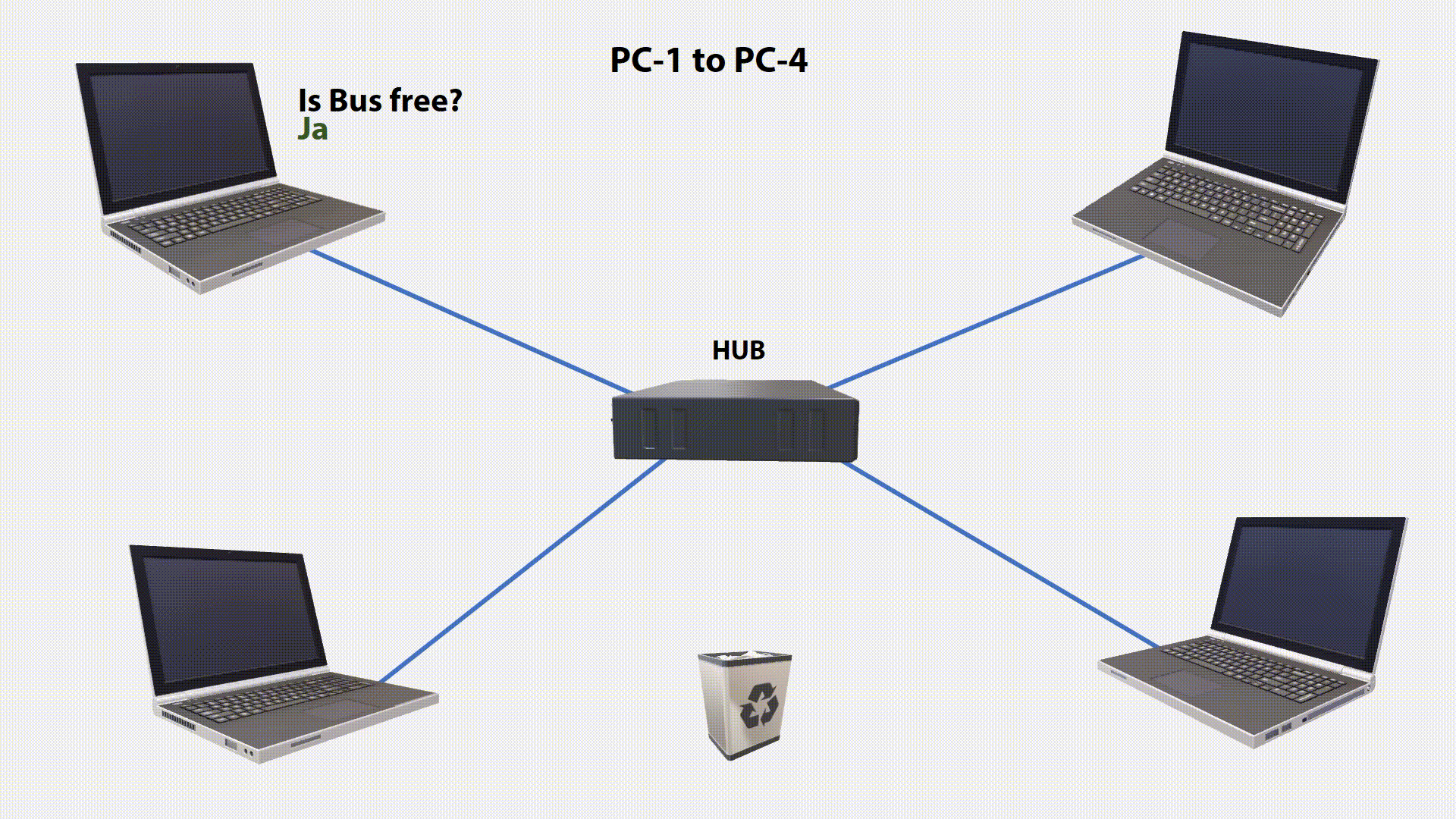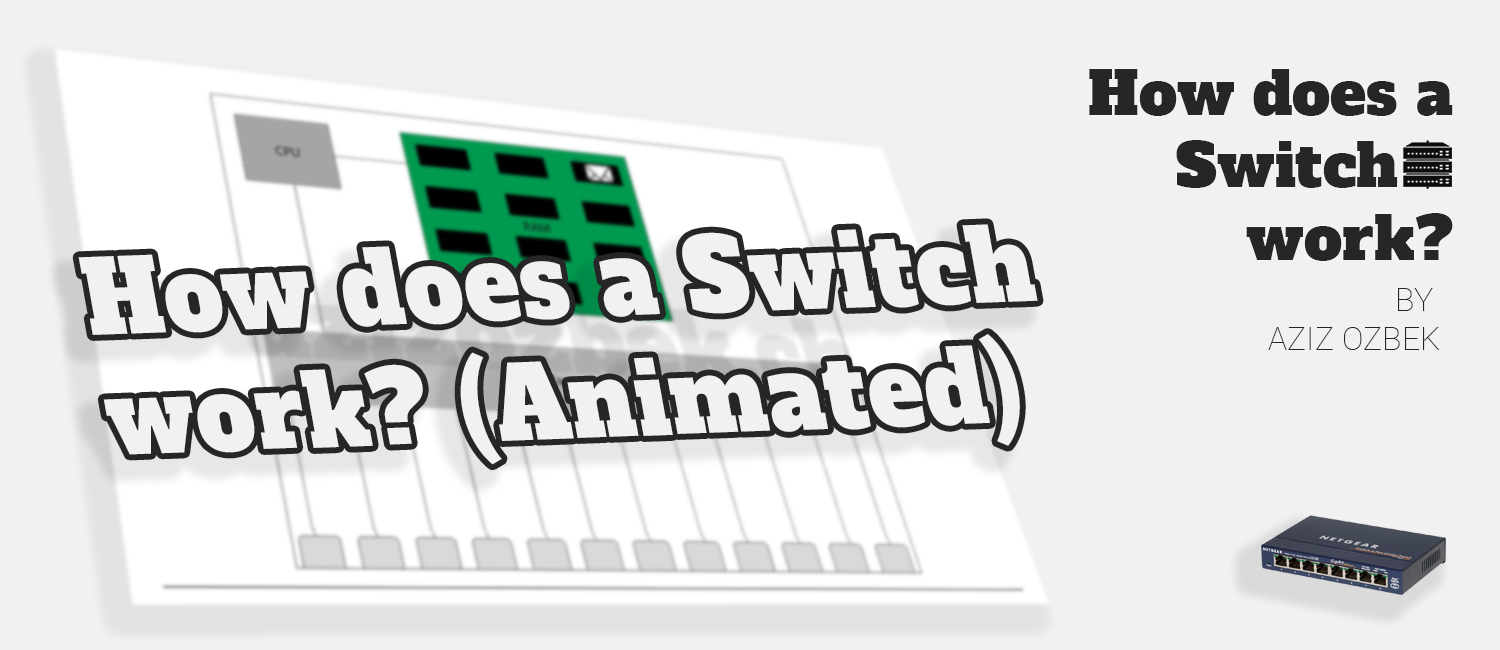In this Article we are gonna see how does a Switch work, the Workprinciple of a simple Switch and most important, difference between Switch and Hub.
A Switch is a powerfull Network Component, in simple case you just use it to increase the Ports of a Router or to increase the Quality of long destinations, for example if you live in third floor and your Router is on first floor, you can either use an Wifi Repeater to boost your Wifi Signal(which not healty) or use a Switch to boost your Ethernet Connection. Of course you can do more than increasing the Ports, for example you can control anything that goes throw your Switch.

📦Cut-Through
The switch forwards the data packet immediately, when it gets the Address of Destination Target.
📋Store-and-Forward
The switch receives the entire data packet and stores it in Random Access Memory(Buffer). There the package will be checked and processed with different filters. Then will the packet be forwarded to the destination Port.

🔄CRC – Cyclic redundancy check
CRC is a method of checking for errors in data transmitted on a communication link. A sending device applies a 16- or 32-bit polynomial to a data block to be sent and appends the resulting cyclic redundancy code (CRC) to the block.
Difference between Switch and Hub
Hub
The difference between Switch and Hub is the way of working. A Hub has the Bus Topology inside. It receives the packet and checks with CSMA/CD Method, then sends it simply to all ports.


Switch
A switch, sends the packet only to the port that needs the package. The advantage of a switch lies in the much higher speed achieved by intelligent routing. Current switches are also able to operate the individual ports at different speeds and can store routes to individual computers.


I hope you got the basic Information about how does a Switch work and difference between Hub and Switch. If you have Questions, let me know 👇
Question
What Address of Destination Device saves the Switch in Buffer?
